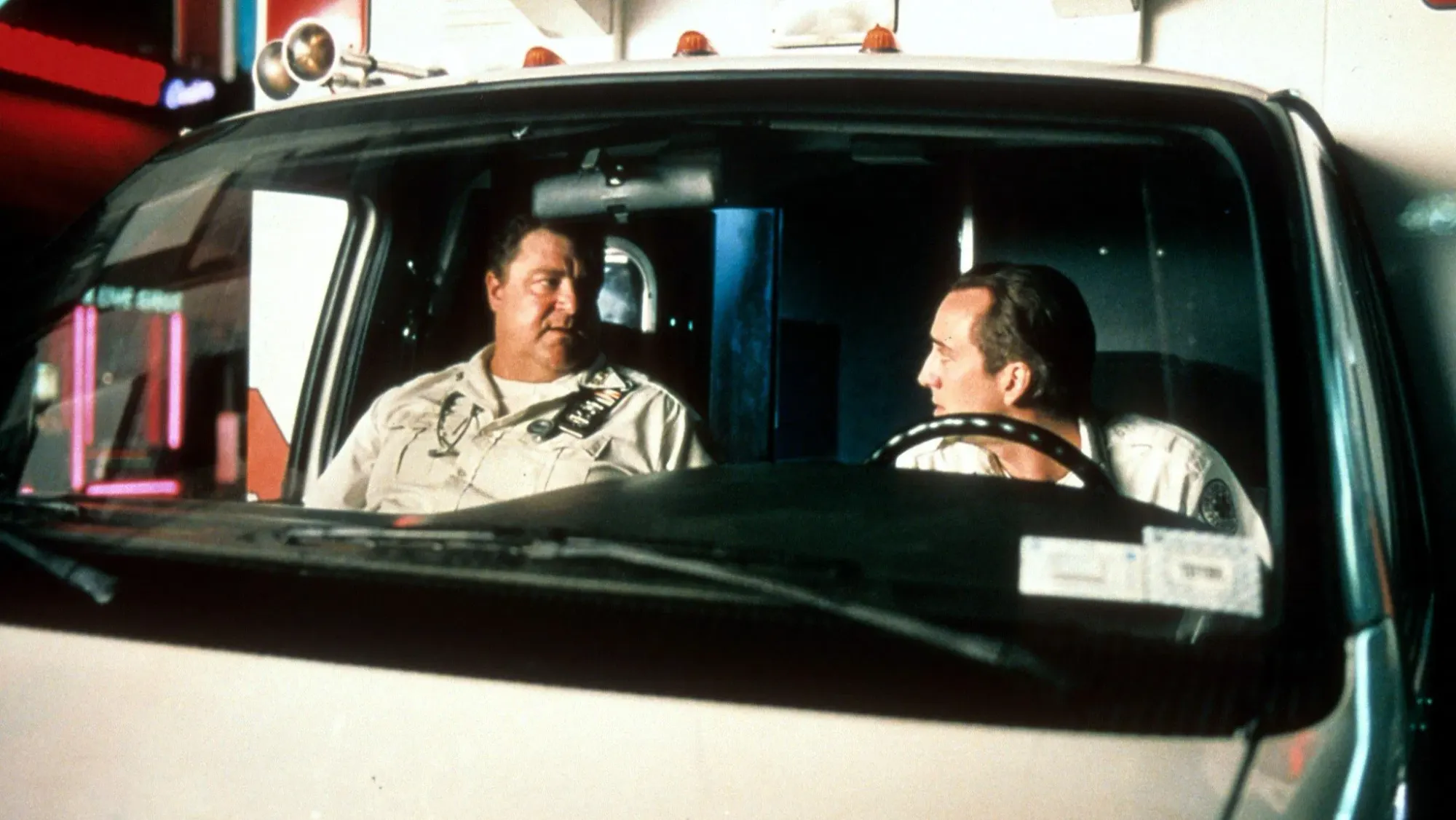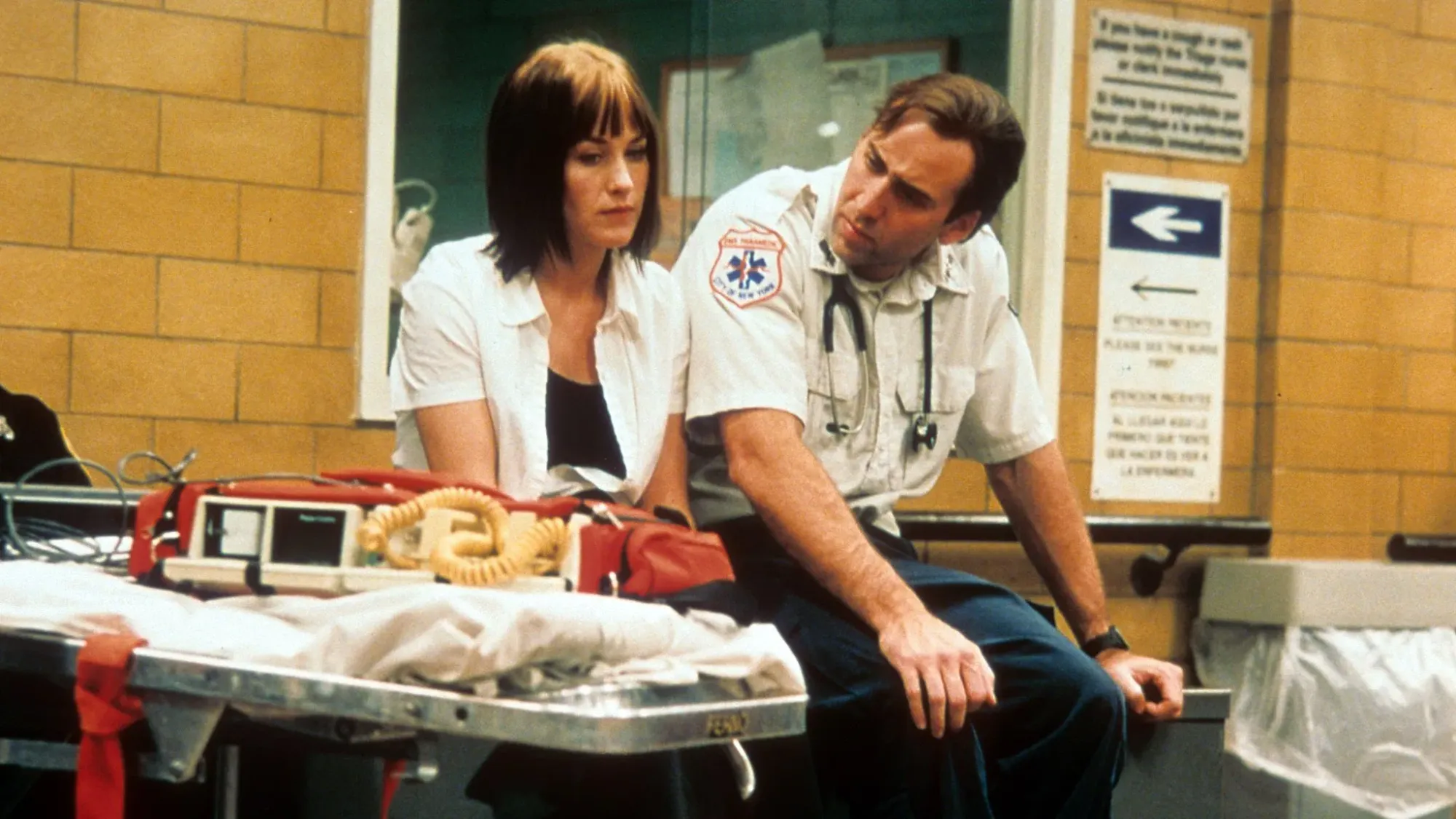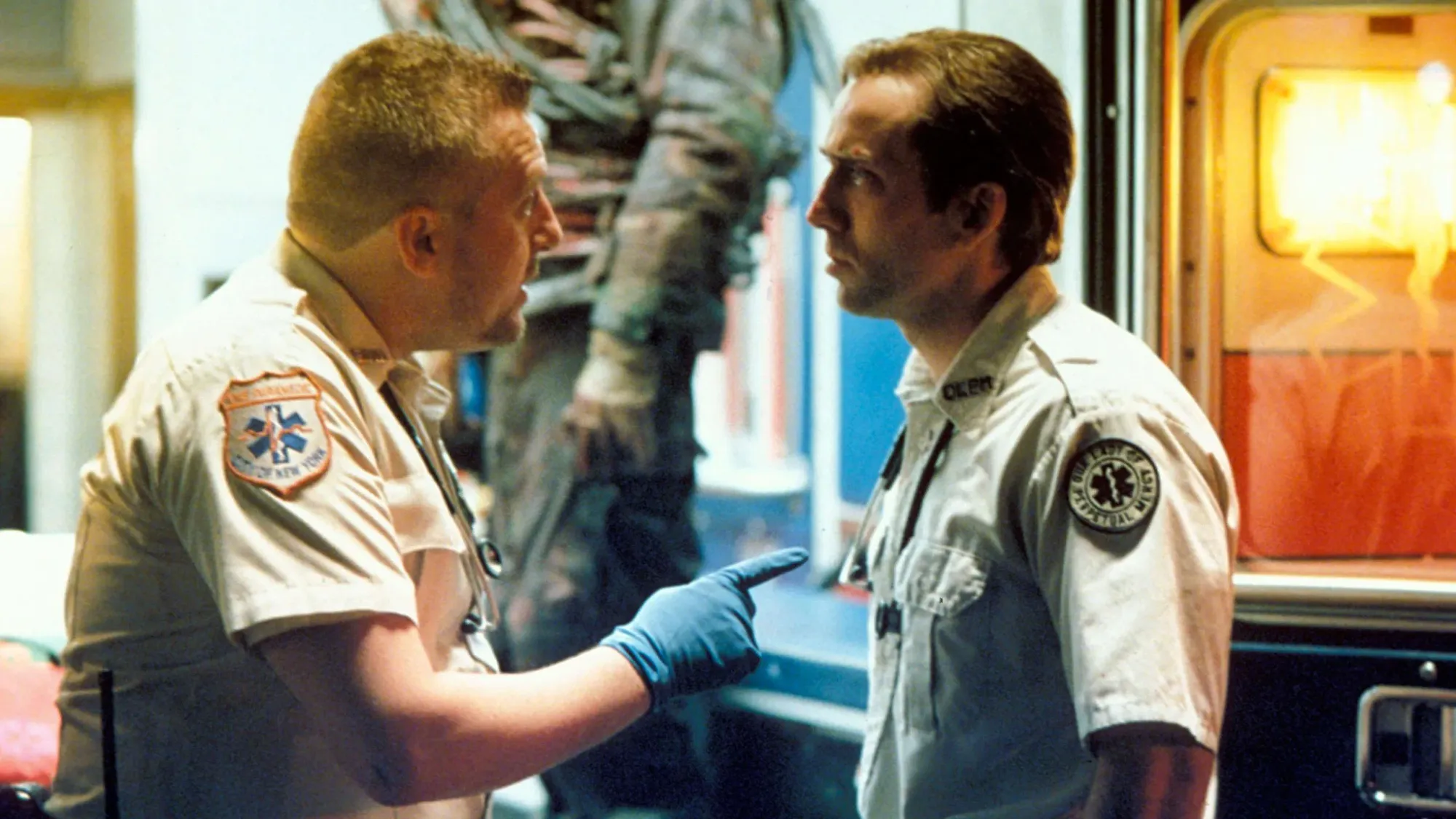Bringing Out the Dead (1999)
Bringing Out the Dead delivers a lot of what Scorsese fans expect. But not enough of it.

I suspect I might write a very different review of Bringing Out the Dead today. (For one thing, I’ve learned how to spell Scorsese properly since then. How embarrassing.) But, for the matter of the historical record, here’s what I wrote then — my first impressions.
It sounded promising: the greatest American director working in his favorite neighborhood again, with one of the greatest American film actors. When you hear the names Martin Scorsese and Nicolas Cage, and you’re promised a story about the underbelly of New York, you automatically anticipate raves on all critical fronts. And Bringing Out the Dead delivers a lot of what Scorsese fans expect.
But not enough of it.
Great acting. Great cinematography. And Scorsese himself in his best role so far... the voice on the radio that calls ambulance drivers out on their cases. But is it a great story?
Perhaps Scorsese was drawn to the idea of working at night, in a modern context, revisiting the tension and the menace of New York streets as seen from behind the wheel, applying his newer filmmaking tricks to a story that echoes his early classics (Mean Streets, Taxi Driver). Unfortunately, while he still films these streets with an intimate understanding and photographic finesse, the script doesn’t really work. Instead of watching a character disintegrate or rise from the ashes, this movie’s hero has already fallen too far, and we just watch him being miserable.

Bringing Out the Dead is like a sad echo, a pale reflection of Dante’s Inferno. Frank Pierce (Nicolas Cage) is an ambulance driver named Frank Pierce, the son of a nurse and a bus driver. So, he’s a little of both. That’s one of his jokes, one of the bits of humor he clings to so desperately in order to maintain some semblance of sanity. Frank is in trouble. He’s slowly burning out after countless nights of visiting crime scenes and attempting to rescue the lives of New York’s self-destructive night life. Most of the cases he responds to are merely the “regulars,” people prone to hurting themselves in desperate bids for attention and love. One is called Mr. O, and it’s not hard to see why; when they visit him he can only communicate with long moans: “Ohhhh... ohhhhh.”
Frank’s various ambulance partners are either weaker, stronger, or weirder versions of himself, who either try and encourage him to stay strong or else speed him on his way to becoming a casualty himself. I half expected one of his half-crazy cohorts to suggest they go to David Fincher’s Fight Club and let out their anxieties in a fistfight. Haunted by the ghost of Rose, a homeless woman who died during his CPR efforts, Frank drinks, smokes, and depends on adrenalin to keep himself moving, fearful of the thoughts the catch up to him when he stands still. Just as many of the wounded are too tired to go on living, Frank is so tired of his job he is begging to be fired.
Frank explains the toil of his job as a failed lifesaver to the audience in a steady, sleepy narration. After meditating on the fleeting joys of saving a life, he observes, “Taking credit when things go right doesn’t work the other way around.” When a patient dies, as is usually the case, and the families and friends at the deathbed grieve, all Frank can muster is a feeble “I’m sorry.” And then come the voices. Victims reappear, blaming him, crying out, dragging him down.

It’s only when one of his colleagues plunges headlong into madness that Frank himself receives a shock to his system and tries to wrench himself free of despair and rid himself of Rose’s relentless ghost. I kept waiting for Scorsese to give us room to consider questions of faith or an opportunity for love, to contemplate where a soul might find solace in this context. But he seems too preoccupied with the violence and the bizarre predicaments that Frank discovers along the way. This frustrated me and made me wonder why he would want to pound on the audience this way.
But there is much to admire about the film. As Frank, Nicolas Cage is excellent, a believably desperate soul. Since his jarring, incredible performance in Birdy, Cage has been the best actor around for playing haunted, desperate men, whether it’s comically (Raising Arizona), action-heroically (which is to say, commercially) (Face Off), or melodramatically (Leaving Las Vegas). As this desperate soul at the wheel, he’s mesmerizing. And his supporting cast is just as strong: Ving Rhames, John Goodman, and Tom Sizemore are his partners, and Patricia Arquette (Cage’s wife) is the lost and lonely soul with whom he discovers a tenuous friendship.
But even as the cast are entertaining and appropriately bedraggled, I found myself anticipating a compelling plot to rise up amidst these details. Perhaps I had the wrong expectations, but even if this film is intended as a mere character sketch, it’s a tedious sketch that wears out its welcome long before we see Frank Pierce come to any kind of epiphany.
Bringing Out the Dead employs a lot of talent in yet another dark and violent story from the partnership of Scorsese and Schrader. But this one feels rather aimless. The last thing the cinema needs is more blood, violence, and despair that fails to arrive at any particular insight. Recent films like David O. Russell’s Three Kings remind us that violence can be effective, even essential, to storytelling — as they were in Taxi Driver and Casino. This film does not. And I don’t recommend it, unless you care to see the best Nicolas Cage performance in several years, or some more of Robert Richardson’s brilliant cinematography.

